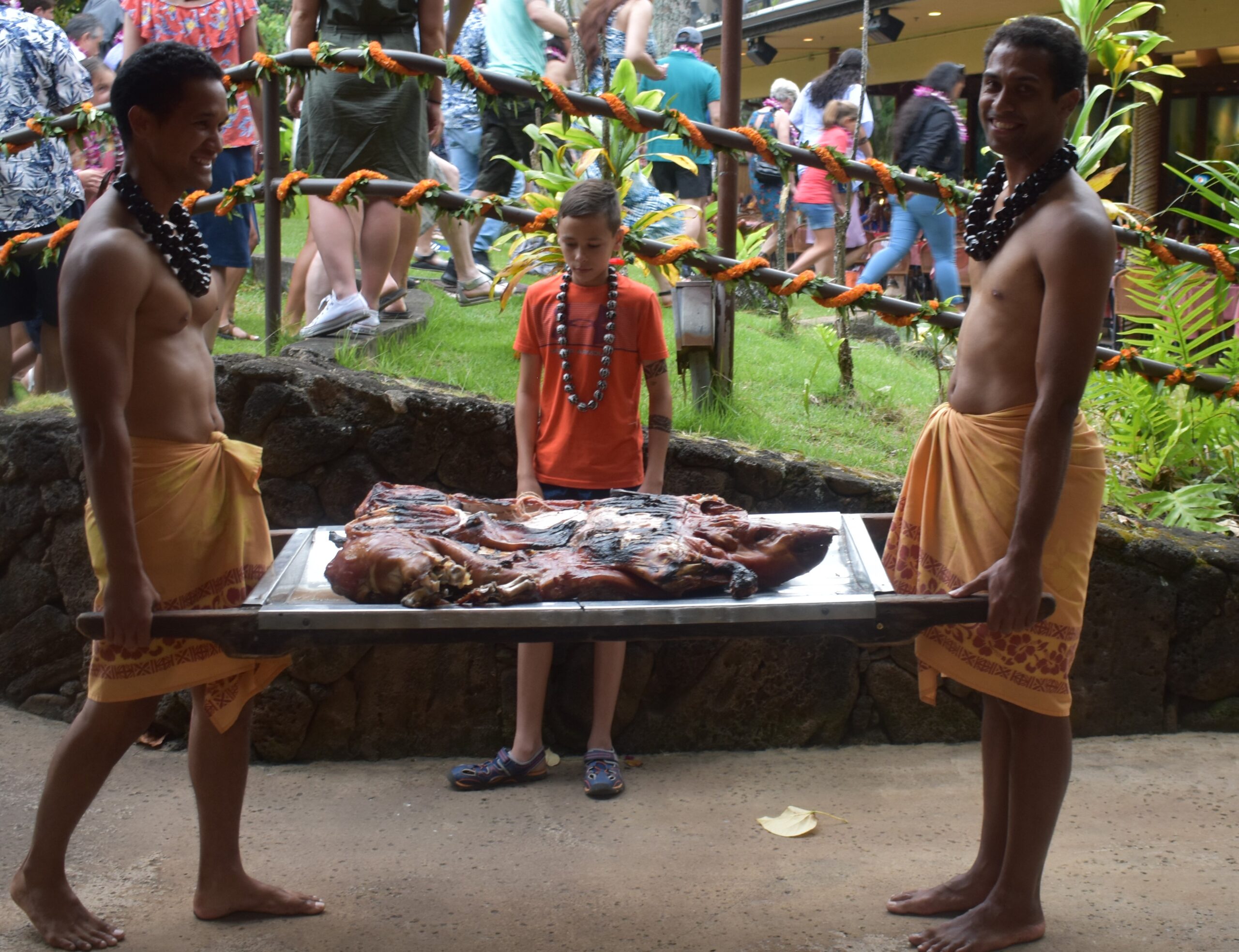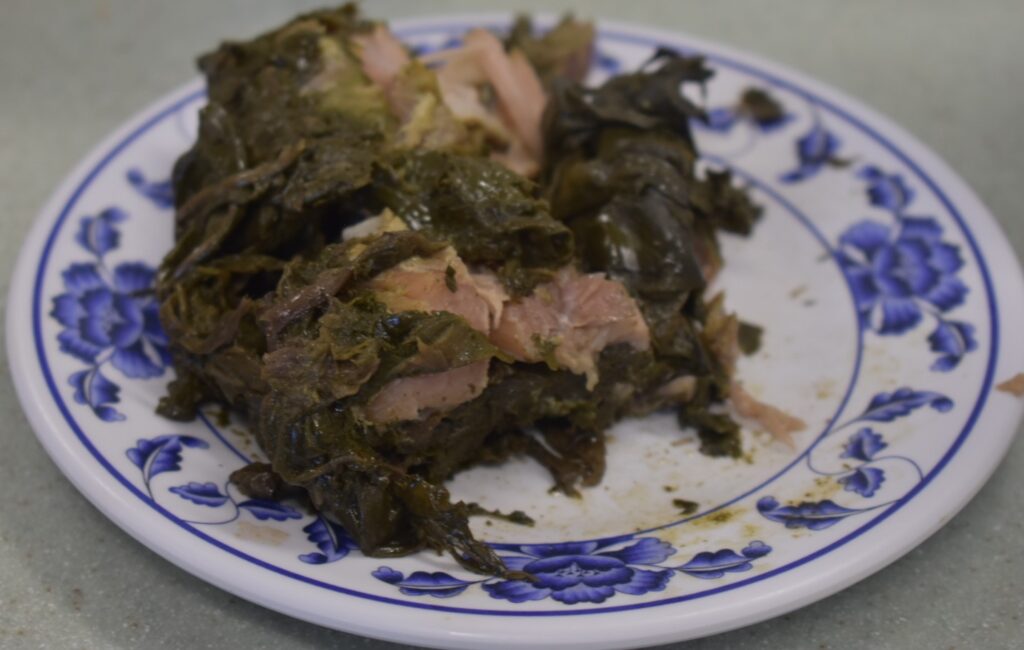Kalua pig, a staple of Hawaiian cuisine, is a culinary masterpiece rooted in ancient Hawaiian traditions. This delectable dish is prepared by cooking a whole pig in an underground pit, resulting in tender, smoky, and incredibly flavorful meat.
The origins of this method date back centuries, and today, it remains a cherished practice for special occasions and celebrations in Hawaii.
Origins of Kalua Pig
The early Polynesian settlers who embarked on the daring voyages to the Hawaiian Islands over a millennium ago were a remarkable group of pioneers. They carried with them a wealth of knowledge, including their mastery of traditional cooking methods, honed over generations in the islands of the Pacific. This culinary expertise was not just a practical skill but a testament to their ingenuity and adaptability. Upon arriving in the Hawaiian archipelago, these resourceful settlers were met with a diverse and bountiful natural landscape. They encountered new flora and fauna, each offering unique flavors and textures. In response, they skillfully integrated these newfound ingredients with their traditional culinary techniques. This harmonious fusion of old and new, of tradition and adaptation, would form the foundation of what we now know as Hawaiian cuisine.

Central to this culinary evolution was the development of the imu, the underground oven. This ingenious cooking method allowed the settlers to harness the natural elements of the islands in a way that complemented their traditional practices. The term “kalua,” derived from the Hawaiian language, embodies this technique, meaning “to cook in an underground oven.” This linguistic connection underscores the integral role of the imu in their culinary heritage. The imu, with its use of heated rocks and earth as a natural oven, not only served as a practical means of preparing food but also held deep cultural and spiritual significance for these early Hawaiians. It was a testament to their intimate connection with the land and their ability to adapt age-old traditions to suit the distinct environment of the Hawaiian Islands. As time went on, this innovative cooking method would become an integral part of Hawaiian culture, evolving and adapting alongside the changing culinary landscape. Today, the tradition of preparing kalua pig in an imu remains a cherished practice, a living testament to the enduring legacy of those early Polynesian settlers who, with their culinary ingenuity, helped shape the vibrant culinary tapestry of Hawaii.
The Cooking Process
Once the pit is ready, it’s time to introduce the element of heat. Rocks, carefully selected for their ability to retain and radiate heat, are chosen and placed within the imu. These stones undergo a transformation as they’re subjected to the intense heat of an open flame, reaching scorching temperatures. This crucial step sets the stage for the slow-cooking process that follows. With the rocks now searing hot, they are meticulously arranged within the pit. This arrangement is a delicate dance, ensuring even distribution of heat throughout the cooking process. Each rock plays a vital role in creating the perfect cooking environment for the pig. The pig itself is prepared with great care. It’s seasoned with a blend of sea salt, native herbs, and sometimes additional flavorings like garlic or green onions. These seasonings not only infuse the meat with rich, aromatic flavors but also pay homage to the natural bounty of the Hawaiian landscape. To further enhance the cooking process, the pig is traditionally wrapped in ti leaves. These leaves serve a dual purpose: they impart a unique flavor to the meat and act as a protective barrier, preventing direct contact with the scorching hot rocks. Ti leaves, also known as ki leaves or lau ki in Hawaiian, are large, vibrant green leaves that come from the ti plant (Cordyline fruticosa). They are known for their unique flavor, which imparts a subtle, earthy taste to the food. When used to wrap food, ti leaves also help to retain moisture and infuse the dish with a distinctive aroma. Beyond their culinary applications, ti leaves hold cultural significance in Hawaii. They are used in ceremonies, rituals, and as ornamental elements in decorations. In ancient times, ti leaves were believed to possess spiritual and protective properties, and they were used in various customs and practices. Ti leaves are large, elongated, and usually dark green in color, with a glossy texture. They have a distinctive, ribbed structure running along the length of the leaf.

This ingenious technique not only contributes to the distinctive taste of kalua pig but also ensures the meat cooks evenly and retains its succulence. In a final act of culinary ingenuity, more ti leaves and wet burlap sacks are layered atop the pig. This creates a natural seal, trapping steam and heat within the pit. This carefully constructed seal is crucial in maintaining the optimal cooking environment for the pig.
As the imu is sealed, the pit is covered with a layer of soil, effectively concealing the entire cooking process from sight. The pig is left to undergo its transformation, slow-cooking over the scorching rocks for several hours. This patient and meticulous process ultimately yield the tender, smoky, and incredibly flavorful kalua pig, a testament to the rich culinary heritage of Hawaii. The cooking time for kalua pig in an imu typically spans several hours, allowing for slow, gradual cooking that results in tender, flavorful meat. The exact duration can vary depending on factors like the size of the pig, the heat of the rocks, and the specific imu setup. Determining the readiness of the kalua pig relies on a combination of factors. Experienced cooks may rely on their knowledge of the process and the nuances of the imu’s heat distribution. They might also use traditional techniques such as inserting a stick or skewer into the meat and assessing its tenderness. However, for those less experienced, modern tools like meat thermometers can be invaluable. By inserting the thermometer into the thickest part of the pig, you can ensure that it has reached a safe internal temperature, which is typically around 160-165°F (71-74°C) for pork.
The Significance of Kalua Pig

The practice of cooking a pig in an imu carries deep cultural and spiritual significance in Hawaiian tradition. It symbolizes unity, as the entire community often comes together to participate in the process. The imu feast is a communal event that fosters a sense of togetherness and showcases the spirit of aloha (love and compassion) that is central to Hawaiian culture. Furthermore, kalua pig is frequently featured in important Hawaiian celebrations and ceremonies. It is a centerpiece at luaus, weddings, graduations, and other significant gatherings. The act of preparing and sharing kalua pig is a way of honoring the land, the ancestors, and the traditions that have been passed down through generations.
As the cooking time comes to an end, it’s time to sink your teeth into the most succulent pig you’ll ever taste. The anticipation builds as the aroma wafts through the air, teasing your senses with its heavenly scent. The moment you take that first bite, you’re greeted by a flavor explosion that’s unlike anything else. The meat is unbelievably tender, practically melting in your mouth. It’s as if every savory note has been captured and intensified by the slow-cooking process. The smokiness from the scorching hot rocks mingles with the earthy richness of the ti leaves, creating a harmonious symphony of taste. The seasoning blend of sea salt, native herbs, and perhaps a hint of garlic or green onions, adds layers of complexity to each bite. It’s a culinary journey that pays homage to tradition, culture, and the deep connection between food and the land. With every mouthful, you’re not just savoring a meal; you’re experiencing the essence of Hawaii’s culinary heritage.






